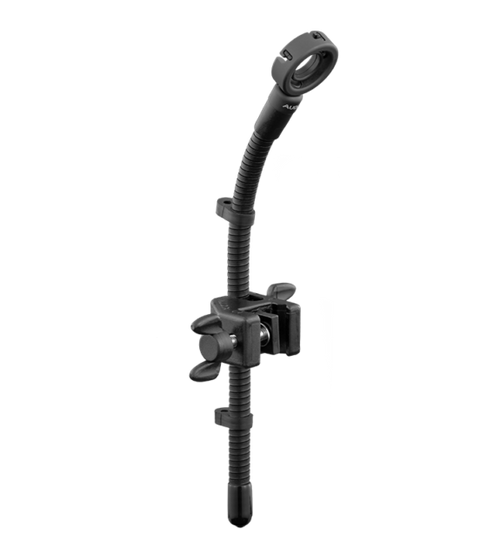Product Description
Audix DCLAMP Flexible Mini-Gooseneck With Drum Tension Lug Clamp For D2 and D4
Flexible mini-gooseneck with drum tension lug mount. Includes DCLIP plastic clip for D Series.
FEATURES . Flexible multi-position metal gooseneck . Locks firmly into position . Fingertip control . Lightweight, durable and scratch resistant . Eliminates bulky mic stands . Works with most microphones . 1 year warranty
OVERVIEW The DCLAMP is a low profile, simple-to-use mounting system that eliminates the need for bulky mic stands. Easily operated, the DCLAMP is provided with a standard 5/8” thread adapter, which allows most mics to be used by just simply changing the clip. The DCLIP fits the D Series microphones and many pencil condenser mics. The DCLAMP works on most tension rods used with hand percussion instruments (such as congas and bongos) as well as standard 9.5 mm and 10.5 mm knurled rods found on tom and percussion mounts. It provides a nice clean look especially when used with the Audix right angle XLR mic cable CBLDR25. The DCLAMP can also be used with the MicroD small condenser mic by simply replacing the DCLAMP’s gooseneck with the MicroD gooseneck. This allows the MicroD to be used in tight spaces (congas, timbales, bongos) where a larger dynamic mic may be hard to position.
PLACEMENT For best results, position the head of the mic approximately two inches above the drum head and aimed towards the center of the drum (usually about 45° angle). Depending on the size and type of microphone being used, the height of the metal gooseneck will have to be adjusted. Simply loosen the wing nut on the side of the clip and move the gooseneck into the proper position then tighten. The gooseneck can also be angled in any direction to achieve the desired position. Microphone placement is not an exact science. It depends on the instrument, the player’s style, the type of music, the loudness of the music, the room acoustics, the sound system, the engineer and, of course, the microphone itself. The DCLAMP is designed to offer maximum flexibility in mic positioning to yield the best possible sound. Experimentation is ultimately the key to achieving the best results for each application. For more ideas go to www.audixusa.com








